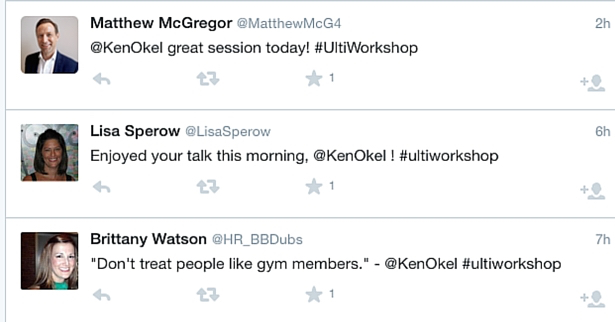 If an exit interview can produce useful information about a business, then why wait until an employee is leaving to have the discussion? There’s nothing to prevent leaders from having in-depth conversations with employees, before they have one foot out the door.
If an exit interview can produce useful information about a business, then why wait until an employee is leaving to have the discussion? There’s nothing to prevent leaders from having in-depth conversations with employees, before they have one foot out the door.
Having this kind of talk might convince an otherwise good employee to stay with the organization.
Why don’t these conversations happen? Many leaders and employees become so locked into the day to day work, that they stop considering the big picture. Little problems are allowed to grow, some of which lead to the employee putting in his or her resignation.
The exit interview is then like a dam bursting, where all sorts of revelations are made. While you gain information, you lose an experienced employee.
The kind of exit interview I’m proposing is more like a mini-retreat. It provides an opportunity to step back and have a honest discussion while the employee is still on the job. Think of it as being between a facilitated discussion and a conversation in the hallway.
Don’t confuse it with an annual review. That process is more about outcomes. You want your session to tap into the wisdom of a current employee and look toward the future.
Not sure how to start? Think of the acronym, POST, which stands for Problems, Opportunities, Strategy, and Training.
Problems: What are the barriers that keep the employee from being more successful? Does the employee have a potential solution in mind?
Opportunities: Is there an opportunity to make a process more efficient or make more money from it? The people who do the work may have ideas they would otherwise not volunteer.
Strategy: This is where you take the ideas and see if they can be molded into an action plan. It’s easy to define a problem. You want to create a step by step process that can improve the situation or fix it.
Training: Could the employee become better with additional training? If approved, could the training help the entire organization and would the employee be willing to teach the lessons learned to staff?
The big picture thinking should happen away from the everyday distractions of the business. Some use a quiet conference room, while others go off-site for some unplugged time at a Starbucks.
It’s important for all to agree this isn’t just a complaint session. People should bring potential solutions to current problems. These are the things you just never have a chance to talk about in-depth due to busy days.
Even if little changes, just having the chance to discuss the issues will mean a lot to staff. Leaders may discover tremendous untapped wisdom from staff.






